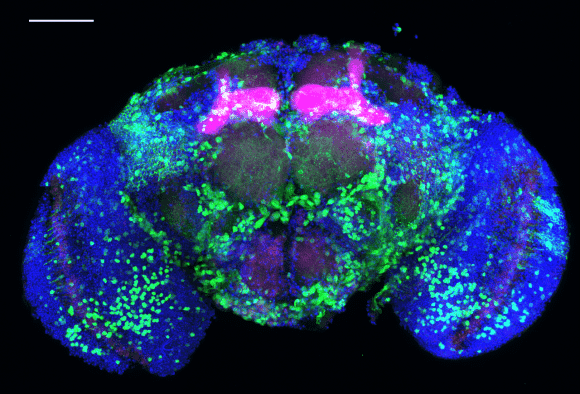The messy thing about addiction is that it changes the brain in a lot of ways at the molecular level, making relapse easy and common. But at least we’re constantly learning new things. According to a recent study, alcohol — and very likely other addictive substances such as cocaine or opiates — hijacks a memory pathway in the brain, which can eventually lead to the cravings that underpin addiction.
“One of the things I want to understand is why drugs of abuse can produce really rewarding memories when they’re actually neurotoxins,” Karla Kaun, assistant professor of neuroscience at Brown University said in a statement. “All drugs of abuse — alcohol, opiates, cocaine, methamphetamine — have adverse side effects. They make people nauseous or they give people hangovers, so why do we find them so rewarding? Why do we remember the good things about them and not the bad? My team is trying to understand on a molecular level what drugs of abuse are doing to memories and why they’re causing cravings.”
Although they only have 100,000 neurons, versus 100 billion found in the human brain, fruit flies have much of the same molecular signals involved in the formation of reward and avoidance memories as we do. For their new study, Kaun and colleagues used genetic tools to selectively turn off key genes while training the flies where to find alcohol. By selectively tweaking genes, researchers were able to find out which proteins were required for the rewarding behavior of alcohol consumption.
One of the proteins identified by the researchers is Notch, a fundamental molecule in a signaling pathway that kicks off embryo development, brain development, and adult brain functions in humans and many other animals. Researchers say that such pathways resemble “falling dominos”, where each signal triggers the activation of other signals in a cascading effect.
Kaun’s team eventually found that one of the signaling pathways downstream of these dominos is a gene called dopamine-2-like receptor. This gene is responsible for triggering the production of a protein that enables neurons to recognize dopamine — the “feel good” neurotransmitter that plays a starring role in motivating behavior.

The pink areas are the fly’s memory centers and the green dots are where the first molecular signaling “domino” Notch has been activated.
Credit: Kaun Lab/Brown University.
Previous research showed that the dopamine-2-like receptor is responsible for encoding whether a memory is pleasing or aversive. What alcohol seems to do is it hijacks this pathway so that the brain rewards alcohol consumption, despite its intoxicating effects. What essentially happens is the brain learns to enhance the formation of cues associated with alcohol, making it more likely to pursue the drug in the future.
Interestingly, alcohol did not switch the dopamine receptor on or off, or even increase or decrease the amount of protein made. Instead, the effect was much more subtle, changing the version of a protein made by a single amino acid “letter”.
“We don’t know what the biological consequences of that small change are, but one of the important findings from this study is that scientists need to look not only at which genes are being turned on and off, but which forms of each gene are getting turned on and off,” Kaun said. “We think these results are highly likely to translate to other forms of addiction, but nobody has investigated that.”
Kaun plans to continue to work by investigating similar effects triggered by opiates.
“If this works the same way in humans, one glass of wine is enough to activate the pathway, but it returns to normal within an hour,” Kaun said. “After three glasses, with an hour break in between, the pathway doesn’t return to normal after 24 hours. We think this persistence is likely what is changing the gene expression in memory circuits.
“Just something to keep in mind the next time you split a bottle of wine with a friend or spouse,” she added.
The findings appeared in the journal Neuron.










